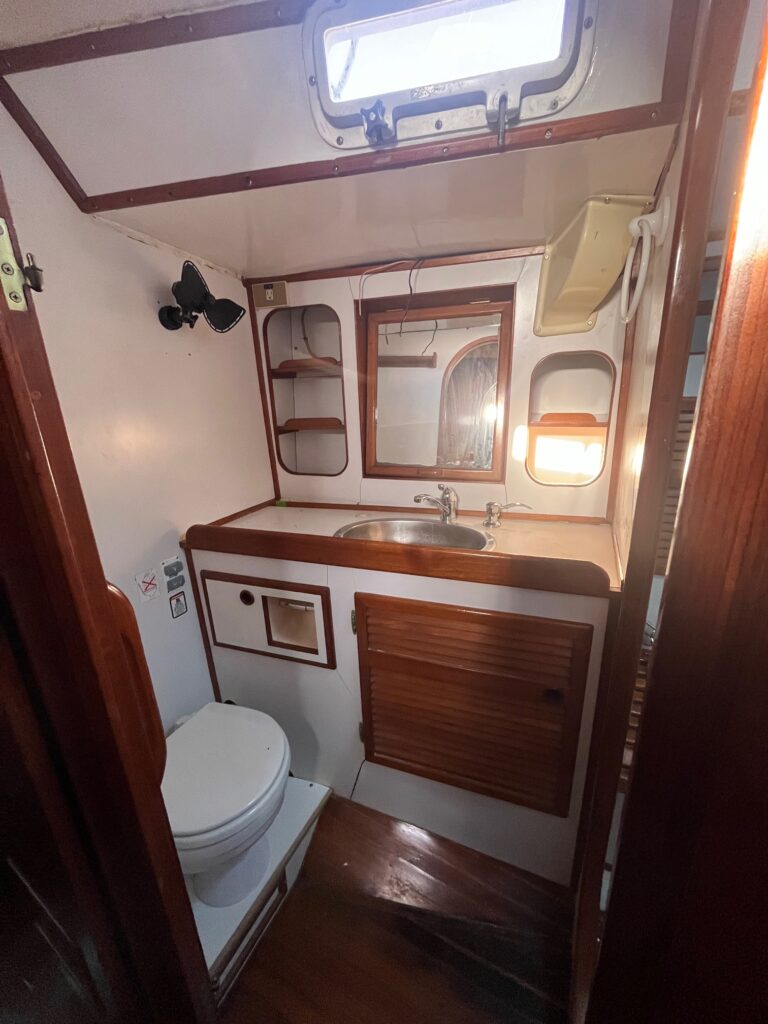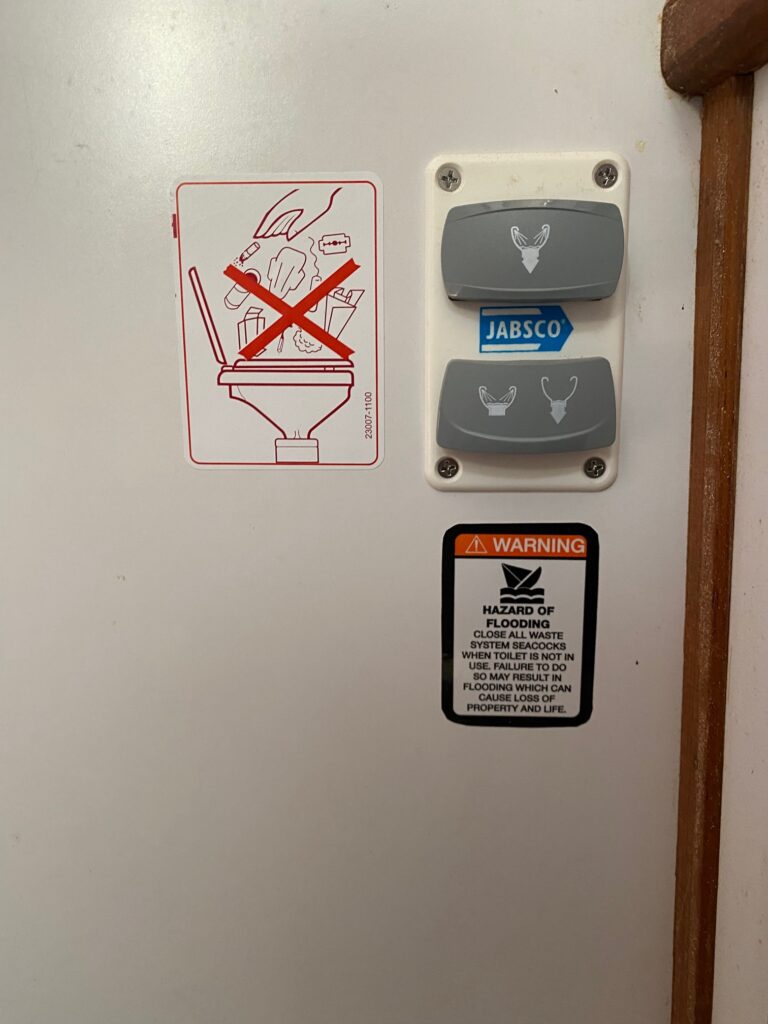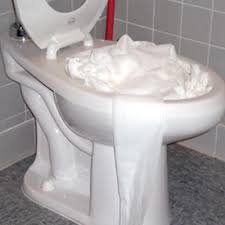(This post not sanctioned by Kim.)

That’s right. IT. We know you’re wondering about IT. Well, I know you’re wondering about IT. Kim says no one is wondering, but I know better. Or maybe it’s because, as a pediatrician, I have spent roughly 33% of my professional career talking about IT. That’s right: IT. Pee. Poop. Bodily functions. Now, on the tiny chance that Kim’s right (when has THAT ever happened?), just stop reading right now because we are diving into the world of marine waste management. Well, not literally diving. More like entering. How about “reviewing”? We’ll “review” the world of marine waste management. That sanitizes it. See what I did there?

Back in 2021, when I re-entered the world of sailing, we chartered a boat for a daysail. At that point, I hadn’t been on a boat for any length of time since I was a teenager-nearly 40 years ago. I went below into the head of the boat and what did I see? A marine toilet. THE EXACT SAME MARINE TOILET WE HAD IN THE BOAT WHEN I WAS A KID!! Microchips, MRI scans, robotic surgery, artificial intelligence, satellite communications-all quantum leaps forward for technology. But the marine toilet? SAME. Unbelievable. I mean, is no one even thinking about this problem? To be fair, when I was a kid, the toilet had a pump handle that we pumped by hand to empty the toilet. They still make lots of those, but we have electric heads on Meraviglia.

Here’s the thing: on a boat, the waste has to be stored. We can’t just dump it over the side. I mean, we can, but it’s rude when one is in a marina or anchorage. No one wants to see that. I saw it yesterday. It’s gross. Out in the open ocean is a different story. There we can pump it over the side. Fish do it. Seabirds do it. No problem. But near land, with other people, coral reefs, etc., it’s a no-no. So we have a holding tank. We do our business, push a button, and the waste gets pumped into the holding tank. Now, this doesn’t sound like flushing a toilet on land. It’s a pump. It’s loud. And then to get water into the bowl, the water pump kicks on as well. Double loud. Everyone knows what’s going on in there. Actually, there are three options. “Oooh”, you’re thinking. “Choices!” One button brings water into the toilet, one button sucks waste out of the toilet, and one button does both. I’ll let you use your imagination as to why there are so many options.


Now the waste is in the holding tank. Our tank is 40 gallons. We typically would fill that in about 3 weeks. Then, it has to be emptied. For emptying, there are 2 choices: we can “pump out”. That involves attaching a suction hose to a fitting on deck and turning on the vacuum. That’s what happens in marinas. We aren’t really in marinas, so we’ve only done that once. Kim really enjoyed it. I am not permitted to share the picture of her manning the pump hose. The other option is to send it overboard. That’s what we do. When we are more than three miles offshore, we open a through-hull, turn on the macerator pump, and pump the contents over the side. And yes, the “macerator” pump does exactly that-it grinds it all up. Still with me? Wishing you had bailed at paragraph one? Well hold on. We have a tank gauge for our holding tank so we know when it’s full. It works by using floats inside the tank that rise as the tank fills. Guess what? It stopped working. Guess why? Yep-clogged up. Guess who took it apart and cleaned it? Yep-Kim. Wait. No. That’s a lie. She went outside while I did the dirty deed. I was wearing gloves though.

There is one more significant difference between boat life and land life when it comes to the potty: toilet paper. TP is the enemy of marine waste systems. It clogs things up. See where I’m going here? No, the answer is not a bidet, although some boats have installed those. In our case, we have a simple rule: bag it. We keep a supply of small, sealable bags on board. TP goes in the bags, gets sealed and tossed in the trash.
And that, ladies and gentlemen, is a primer on marine waste systems. Many of you reading this are extremely bright. We await your inspiration for the next generation of marine waste management solutions (beam it up, Scotty?). Because, really, 40 years is a long time to go without advancement.
I hope something exciting happens in the next few days to write about. Otherwise, we’ll explore other bodily functions on board.

May 5, 2024 at 9:27 pm
Thanks for the laughs, Bob. Our waste management in our Sprinter Van camper is much the same. In fact, when we remodeled the retirement home we live in in Opelika, AL, we added a tall carport for the van AND put in a water source and a sewage access so we can dump our grey and black tanks when we return from a camping trip.
Also, I was telling someone just the other day that we we hosted NASA astronauts at various children’s hospitals where I worked, they ALWAYS started with answering the unasked curiosity question from the patients, “How do you pee and poop in space?”
Continued safe and happy sailing,
Elen
May 5, 2024 at 10:34 pm
I LOVE the fact that you spent so much time creating this post with Kim rolling her eyes the whole time. You be you!
May 5, 2024 at 10:40 pm
I work with IT (information technology) systems. I never realized the similarities between IT and IT, but you’ve helped me to see the light:
– getting early training from experienced people is valuable
– poor choices will lead to regret
– cleanup is unpleasant but necessary
– broken sensors are gonna be a BIG problem
– pushing the wrong button should be avoided
– the further you get into the story, the worse it gets
Sorry Kim – this was the one time Bob was correct.
May 9, 2024 at 9:07 pm
Sailors talk about poop and pee more than anyone I’ve ever met. And why not. It’s a normal thing that everyone does!